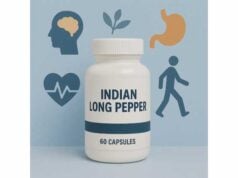
Indian Physic (Gillenia trifoliata, synonym Porteranthus trifoliatus), also known as Bowman’s root or American ipecac, is a North American woodland perennial with a long record in Indigenous and early American medicine. Traditionally, the dried root was used in tiny amounts as a bitter digestive and in larger, carefully measured amounts as an emetic or brisk laxative. Today, most people are interested in Indian Physic for its gentler uses: a digestive “reset” after heavy meals, an occasional-constipation plan when fiber and fluids are not enough, or as a short-course adjunct during seasonal sluggishness. Because the root is potent and dosing is nuanced, respect for the plant’s strength is essential. This guide explains what Indian Physic is, how it was used historically, where its actions likely come from, how to approach modern, safer use, and when to avoid it. You will also learn how to select quality material, set realistic expectations, and troubleshoot common mistakes.
Key Takeaways
- Primary traditional actions: bitter digestive, emetic at higher doses, and short-course laxative for occasional constipation.
- Typical modern adult range: 200–500 mg dried root powder as a bitter; 1–2 g (tea or capsules) cautiously as a single-night laxative.
- Safety first: avoid high or repeated doses; improper use can cause vomiting, dehydration, or electrolyte imbalance.
- Do not use in pregnancy, in children, or with heart/kidney disease, and avoid if you have active GI disease or are taking digoxin or diuretics.
Table of Contents
- What is Indian Physic?
- Benefits: what it can and cannot do
- How to use: preparations and best practices
- Dosage: how much and when
- Side effects, precautions, who should avoid
- Mistakes and troubleshooting
- Evidence: what the research says
What is Indian Physic?
Indian Physic is a hardy herbaceous member of the rose family (Rosaceae) native to eastern North America. In gardens it’s prized for wiry red stems and airy white, star-like flowers; in historical medicine its root was the prized part. Indigenous healers and early settlers prepared the dried, powdered root for specific purposes: minute amounts as a bitter to stimulate digestion and larger, measured amounts as an emetic (to induce vomiting) or brisk laxative during acute gut upsets.
Names and identity.
- Latin binomial: Gillenia trifoliata (syn. Porteranthus trifoliatus).
- Common names: Indian Physic, Bowman’s root, American ipecac, mountain Indian-physic.
- Not the same as the South American ipecacuanha (Carapichea ipecacuanha). Despite the “ipecac” nickname, these plants are unrelated and differ in chemistry and risk profile.
What gives the root its effects?
Modern botanical and genomic studies place Gillenia as a phylogenetically insightful Rosaceae species. While the exact active marker compounds for Indian Physic’s traditional actions are not fully standardized, the root’s intensely bitter principles likely drive its digestive stimulation, much as bitters do in other traditions. The emetic and cathartic effects reflect stronger stimulation of upper and lower GI reflexes when dose thresholds are crossed. In short: low dose = digestive nudge; high dose = forceful clearing.
How it was traditionally positioned.
- Bitter tonic: taken before or after heavy meals to spur gastric secretions and motility.
- Acute clears: single-evening doses to relieve stubborn constipation or “bad food” episodes, always with rest and fluids.
- Topical/folk uses: poultices and external applications for stings or soreness were recorded in some communities.
Modern context.
Today, safer and gentler options exist for daily digestive support (dietary fiber, osmotic laxatives, carminative teas). That said, Indian Physic still appeals to people seeking a one-night reset under conservative dosing, or to herbalists who value traditional bitters in microdoses.
Sustainability and quality.
Choose products that state Gillenia trifoliata or Porteranthus trifoliatus and provide batch testing for identity and contaminants. Cultivated, traceable root is preferable to wild-harvest where possible.
Benefits: what it can and cannot do
Digestive “bitter” effects at low dose
Like many classic bitters, small amounts of Indian Physic can stimulate taste-mediated reflexes that increase saliva, gastric secretions, and a gentle wave of motility. People who feel heavy, bloated, or sluggish after rich meals sometimes notice a milder, more complete digestion with a tiny pre-meal dose. This effect is modest, works best when paired with slow eating and fiber-rich meals, and is not a substitute for consistent diet changes.
Occasional constipation relief at moderate dose
A single nighttime dose—usually as a warm tea or measured capsules—may trigger a morning bowel movement. Expect a brisker effect than bulking fibers but typically less cramping than harsher stimulants if the dose is conservative and hydration is adequate. Because the active threshold is narrow, start low; too much easily flips the experience from “productive” to overly purgative.
“Reset” after dietary indiscretion
Following a heavy, greasy, or questionably stored meal, some traditional protocols used an emetic dose to empty the stomach if taken very soon after eating. In modern practice, self-inducing vomiting is not recommended due to risks (aspiration, electrolyte shifts). If you feel unwell after suspect food, the prudent path is rest, fluids, and medical advice if symptoms escalate.
What it cannot do
- It is not a daily detox or weight-loss tool. Repeated purging undermines gut function and overall health.
- It does not correct persistent constipation caused by low-fiber diets, medications (e.g., opioids), pelvic floor dysfunction, or thyroid disorders. Those require a long-term plan and diagnosis.
- It is not a substitute for professional care in infectious gastroenteritis, food poisoning with severe symptoms, or GI bleeding.
Who tends to benefit
- Adults with occasional constipation who want a short-course, single-evening option a few times per month.
- People who respond well to bitter tonics and prefer microdosing before heavy meals.
- Individuals who tolerate other bitters but want to test a traditional North American alternative.
Realistic expectations
- Bitters: subtle shifts within minutes; overall benefit visible over 1–2 weeks of consistent microdosing paired with better meals.
- Laxative use: a 6–12 hour window to effect, ideally by morning; adjust dose in small steps to avoid overshooting.
How to use: preparations and best practices
1) Powdered root (capsules or loose powder)
- Bitters/microdose: 200–500 mg with a sip of water 10–15 minutes before the largest meal.
- Occasional laxative: 1–2 g as a single evening dose, taken with a full glass of water. Remain home the next morning until you know your response.
2) Traditional tea (decoction/infusion hybrid)
- Combine 1–2 g dried, cut root with 250 ml hot water.
- Method A (gentle): Steep covered 15 minutes; strain and sip warm.
- Method B (stronger): Simmer on very low heat 10 minutes, then steep covered 10 minutes; strain.
- For a bitter effect, ½ cup before a heavy meal; for an evening laxative, 1 cup after dinner (do not redose the same night).
3) Tinctures and liquid extracts
- Products vary; a common strength is 1:5 (w/v) in 45–60% alcohol.
- Bitters: 1–2 ml (about 30–60 drops) in a little water before a rich meal.
- Laxative: 2–4 ml once in the evening; only with clinician guidance if you’re new to the herb.
4) Combinations (use judgment)
- For digestion: pair with aromatic carminatives (ginger, fennel, orange peel) to reduce queasiness some feel with bitters.
- For occasional constipation: consider a daytime osmotic base (polyethylene glycol) and keep Indian Physic as nighttime rescue no more than a few times weekly.
- Avoid stacking with stimulant laxatives (bisacodyl, senna) on the same night unless a clinician instructs you; the combination can cause harsh cramps or diarrhea.
Best-practice checklist
- Start low. This herb has a steep dose-response curve.
- One-night rule. Use as a single evening dose for constipation, not repeated hourly or across consecutive days without guidance.
- Hydrate. A full glass of water with the dose; electrolyte-rich fluids the next morning if stools are loose.
- Stay home initially. Learn your timing before dosing on work nights.
- Record response. A brief log helps you find the lowest effective amount and avoid repeating mistakes.
Dosage: how much and when
Adults (general guidance)
- Bitters/microdosing: 200–500 mg powder, or 1–2 ml liquid extract, 10–15 minutes before a heavy meal. If you feel queasy, take with the first bites instead.
- Occasional constipation: 1–2 g dried root (tea or capsules) once in the evening. Expect an effect 6–12 hours later. If nothing happens by morning, don’t redose immediately; hydrate, move, and reassess the next evening with a small increase (e.g., +250–500 mg).
Older adults
- Favor the low end: 100–250 mg as a bitter; 0.5–1 g as a laxative trial. Monitor for lightheadedness (especially if you use diuretics or antihypertensives), and increase slowly only if needed.
Not for children or pregnancy
- Indian Physic is not recommended for children or during pregnancy/lactation due to emetic/cathartic risks and limited safety data. Choose safer, better-studied options (dietary fiber, glycerin suppositories, osmotics under pediatric guidance).
Frequency and duration
- Bitters: up to once daily before the largest meal for 1–2 weeks, then reassess. If you need it indefinitely, work on diet quality and meal rhythm instead.
- Laxative: no more than 1–3 nights per week, and not for more than two consecutive weeks without clinician input. If you require frequent stimulant help, investigate underlying causes (thyroid, iron/calcium supplements, pelvic floor dysfunction, IBS-C, medications).
When to take a break
- If stools turn watery, if you feel weak or dizzy, or if you notice abdominal pain beyond normal cramping, stop and hydrate. Reintroduce later at half the prior dose, or switch to a gentler plan.
Practical examples
- Heavy-dinner traveler: 250 mg powder before the main meal; if constipated after a flight, 1 g tea once that evening.
- Occasional-constipation office worker: keep 8–10 oz of a mild evening tea (1–1.5 g root), paired with daytime fiber and a short walk after lunch.
Side effects, precautions, who should avoid
Common, usually dose-related
- Nausea or queasiness, especially on an empty stomach at higher doses.
- Abdominal cramping or loose stools when the dose overshoots.
- Bitter taste lingering after liquids; usually fades quickly.
Less common but important
- Vomiting at emetic-range doses (historically intentional, now discouraged).
- Dehydration and electrolyte imbalance after repeated purging or diarrhea.
- Dizziness or lightheadedness, particularly in older adults or in hot weather when fluid intake is low.
Interactions
- Diuretics or digoxin: increased risk of electrolyte disturbances can raise digoxin toxicity risk—avoid self-experimentation.
- Antihypertensives: sudden volume loss from diarrhea can potentiate low blood pressure.
- Lithium or QT-prolonging drugs: dehydration can destabilize levels or rhythm—avoid.
- Other stimulant laxatives: stacking can cause severe cramps and watery stools.
Who should avoid or seek medical advice first
- Pregnant or breastfeeding individuals.
- Children and adolescents.
- Anyone with GI ulcers, inflammatory bowel disease flare, bowel obstruction, unexplained abdominal pain, or rectal bleeding.
- People with heart, kidney, or liver disease, or on narrow-therapeutic-index medications (digoxin, lithium, warfarin).
- Those with a history of eating disorders or laxative misuse.
When to seek care
- Alarm signs: black/tarry stools, blood in stool or vomit, severe persistent vomiting, fever, chest pain, marked weakness, or fainting.
- Constipation lasting >7 days despite appropriate self-care.
- New bowel habit changes after age 45, unintended weight loss, or anemia.
Safety tips
- Always start low and use the lowest effective dose.
- Favor one-night trials over serial dosing.
- Combine with water, electrolytes, and a fiber-forward diet to reduce repeat need.
Mistakes and troubleshooting
Mistake 1: Treating Indian Physic like a daily fiber
This is not psyllium or a prebiotic. It’s a potent traditional remedy with a narrow dose window. Use it sparingly and focus on diet, movement, and hydration for daily maintenance.
Mistake 2: Redosing the same night
If “nothing is happening,” don’t take more at midnight. Onset can be delayed and stacking doses leads to overcorrection by morning. Wait until the next evening and adjust slightly.
Mistake 3: Using it during suspected food poisoning
Vomiting and diarrhea can mask or worsen infections. If you have fever, bloody diarrhea, or severe pain, skip home remedies and seek medical care.
Mistake 4: Ignoring electrolytes
If stools are watery, sip electrolyte solutions (not just water). Watch for muscle cramps, weakness, or palpitations—signs to stop and rehydrate.
Troubleshooting quick guide
- Nausea with low-dose bitters: halve the dose; take with the first bites of food; pair with a carminative like ginger.
- Cramping with laxative dose: step down by 250–500 mg, add a daytime osmotic (if appropriate), and walk after meals.
- No effect after two nights a week apart: reassess diet (fiber 25–38 g/day), stool form (Bristol 1–2 suggests dehydration), and medications (iron, anticholinergics). Consider a different class of laxative under guidance.
- Taste fatigue: switch to capsules for a week or blend a small amount of orange peel or fennel into tea for aroma (only at low doses).
Quality pitfalls
- Mislabeling: confirm Gillenia trifoliata or Porteranthus trifoliatus on the label.
- Old stock: bitter intensity and aroma should be present; musty odor suggests poor storage—avoid.
Evidence: what the research says
Taxonomy and modern genomics
Gillenia trifoliata has become a reference point in Rosaceae research because it retains several ancestral traits relative to apple, pear, and other fruit-bearing relatives. High-quality genome and chloroplast assemblies have been published, clarifying evolutionary relationships and supporting future phytochemical work. While these genomic resources are not clinical trials, they establish trustworthy species identity and open doors for mapping pathways that may relate to its traditional actions.
Historical and ethnobotanical record
Multiple reputable botanical databases and native plant centers document traditional uses of Indian Physic’s dried root as a mild emetic and laxative. These records align with early settler herbals and with modern horticultural references that still list “Indian Physic” among common names. Such sources help triangulate long-standing practice, but they do not replace controlled clinical evidence.
Clinical evidence
There are no robust modern randomized trials evaluating Indian Physic for constipation, dyspepsia, or other indications. Absence of modern trials means we extrapolate from traditional dosing, pharmacologic reasoning (bitter effects and GI reflexes), and comparative experience with other bitters. Because the emetic threshold can be crossed easily, conservative, occasional use is the only sensible modern approach without clinician supervision.
Safety evidence
Modern safety data are limited and mostly inferential. The main risks—nausea, vomiting, diarrhea, dehydration, and electrolyte imbalance—flow directly from the herb’s emetic/cathartic nature. As with other stimulant or emetic botanicals, avoid frequent use and keep doses low. For routine constipation, current medical guidelines favor fiber, osmotic laxatives, and behavioral strategies before considering stimulant approaches.
Bottom line
Indian Physic is historically legitimate and potent, best approached today as a rarely used adjunct in adults who tolerate bitters and want a single-night option for occasional constipation. Lack of modern clinical trials argues for caution, low dosing, and a strong emphasis on non-herbal measures for everyday gut health.
References
- The Gillenia trifoliata genome reveals dynamics correlated with growth and reproduction in Rosaceae 2021 (Genomics)
- Gillenia trifoliata (L.) Moench 2025 (Government Database)
- Gillenia trifoliata (American Ipecac, Bowman’s Root, Indian Physic, Ipecac, Mountain Indian-physic) 2024 (Botanical Profile)
- Gillenia trifoliata (Bowman’s root) | Native Plants of North America 2023 (Native Plant Profile)
- The complete chloroplast genome sequence of Gillenia trifoliata (L.) Moench (Rosaceae) 2020 (Genomics)
Disclaimer
This article is educational and not a substitute for personalized medical advice, diagnosis, or treatment. Indian Physic is a potent traditional herb: incorrect use can cause vomiting, dehydration, and electrolyte imbalance. Do not use during pregnancy or breastfeeding, in children, or if you have heart, kidney, or serious gastrointestinal disease. If you experience severe abdominal pain, persistent vomiting or diarrhea, blood in stool, black stools, chest pain, fainting, or signs of dehydration, seek urgent medical care. Discuss all supplements and herbs with a qualified clinician, especially if you take prescription medications.
If you found this guide helpful, please consider sharing it on Facebook, X (formerly Twitter), or your preferred platform, and follow us for future updates. Your support helps us continue producing careful, people-first health content.










